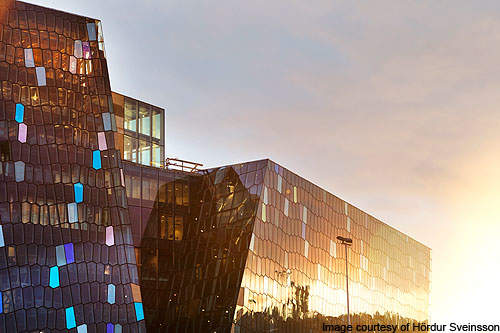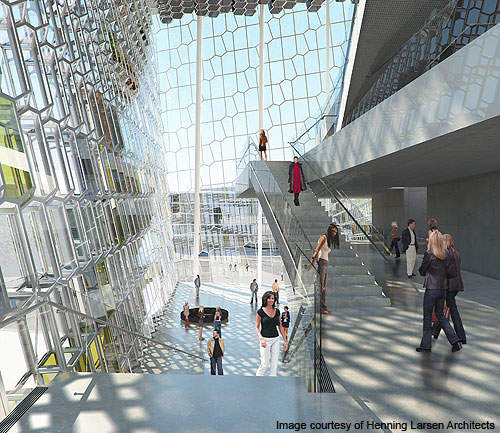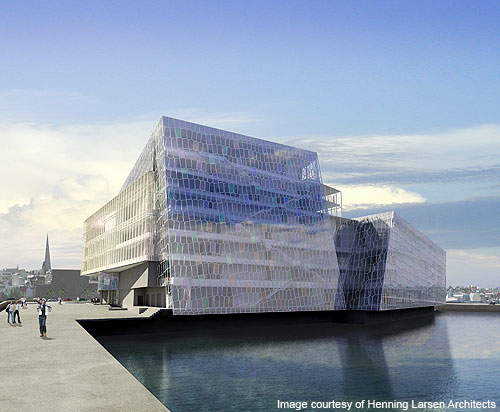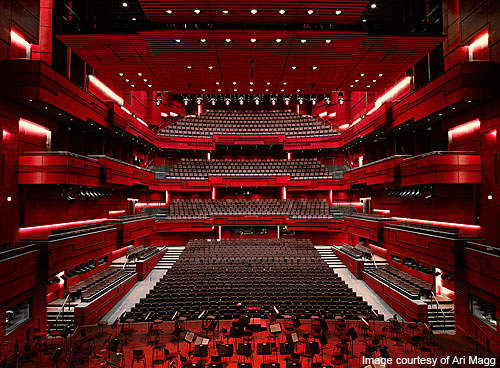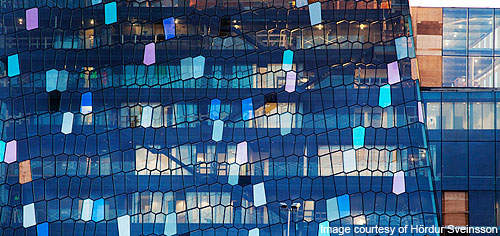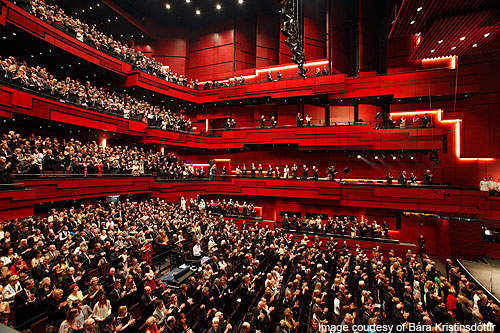Harpa is a concert hall and conference centre in Reykjavík, Iceland, which was officially inaugurated in August 2011. It is also called the Icelandic National Concert and Conference Centre.
The 28,000m² (258,000ft²) development was designed by Portus Group which won first prize in the international public private partnership (PPP) design and build competition held for the project during 2004-05.
The design architects of the group were Henning Larsen Architects (HLA) and Batteriid Architects. The façade of the building was designed by the Danish-Icelandic artist Olafur Eliasson.
The facility houses the Iceland Symphony Orchestra (ISO) and The Icelandic Opera. It was developed by Portus Group and is operated by AGO, which are owned by the city of Reykjavik and the Icelandic state. The project has cost about ISK 30bn ($258m).
Master plan for the Harpa concert hall and conference centre
The Harpa Centre is a landmark building located between the North Atlantic Ocean and Reykjavik city centre. It was built as part of Reykjavik’s harbour and waterfront area development, known as the East Harbour Project.
The master plan includes development of 85,000m² of area on the eastern harbour site to improve the connection between the city centre and the harbour.
The master plan also proposed the development of residences, educational institutions, a five-star hotel, cinema, shopping streets, a new downtown plaza, mixed industries and underground parking. These developments have been, however, put on hold due to cost overruns.
Designs for the Icelandic project
The 43m high, four storey building is designed as a radiant sculpture on the isolated harbour site. The building is located at the edge of the city and reflects the urban context of the harbour.
The design was inspired from the scenic beauty of the Iceland and the northern lights. The building provides clear views of the surrounding mountains and the ocean.
Public access to the backstage is provided from the north, while the entrance to the three halls is from the south. The facility also features ten meeting rooms and a large exhibition area. A multifunctional hall on the fourth level is used for banquets and intimate shows.
Interior design features
The building has a large foyer and arrival area in the front, four halls in the middle and a backstage area with rehearsal hall, changing rooms, administration and offices at the back.
The entrance hall built over the first two levels of the building can be used for banquets, reception and exhibitions. Eldborg, the main concert hall, located on the second floor, is the largest with a seating capacity of 1,800.
The other three – rehearsal hall for the Icelandic Symphony Orchestra, Conference Hall (Silfurberg) and Chamber Music Hall – are located side by side. They can accommodate about 3,000 people in total.
The facility is equipped with the latest technological staging, sound and presentation systems. The adjustable acoustics systems include coupled acoustics control chambers and a two-piece overhead reflector system called canopies. The acoustics design and theatrical equipment was provided by Artec Consultants.
Façade of the Icelandic National Concert and Conference Centre
An irregular-shaped façade covers the entire building. The steel and glass envelope was designed on the principles of geometry and considering natural light and transparency as the key elements.
The southern side wall is composed of 12-sided space-filling modular blocks called quasi-bricks. It consists of 956 quasi bricks made of 1,100 unique glass elements and 1,500t of steel.
The three-dimensional bricks contain light emitting diodes (LED) to emit different colours. The brightness and colour of the each module can be adjusted individually to the Icelandic seasons and weather.
The other sides of the façade and roof have two-dimensional flat façades and follow the geometrical system. They are made of five and six-sided structural frames.
The façade structure was inspired from the geological basalt formations of Icelandic coasts. Several digital visualisation techniques, 3D computer modelling, maquettes, element modelling, mock-ups and models were used for its development.
Construction of the landmark structure
The project site covers an area of 60,000m². Construction of the cultural building was started in January 2007. The project was initially planned to be carried out by a Public Private Partnership (PPP).
The economic downturn in Iceland, however, necessitated the Icelandic Government and the Reykjavik municipality to complete the construction with their own funds. The project was completed in spring 2011.
The building required about 30,000m³ of concrete and 200,000m³ of soil removal from the site. About 800 people worked on the building construction.
About 16,000 individual cast corners were made and 18t of silicone was used to make the glass connections on the facade. About 2,000 people were involved in the construction of the façade.
Facilities
Harpa is designed to host versatile large events such as large concerts, conventions, exhibitions and intimate smaller meetings and banquets simultaneously without any interference. Amenities at the centre include a restaurant and bar, boutiques, a ground-floor bistro, catering and 18,700m² of parking space.

